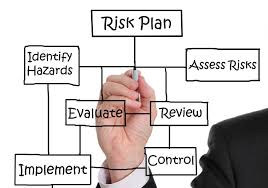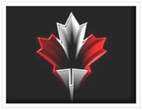Risk Management

Risk Management
Risk Management is the identification, assessment, and prioritization of risks followed by coordinated and economical application of resources to minimize, monitor, and control the probability and/or impact of unfortunate events or to maximize the realization of opportunities. Risk management’s objective is to assure uncertainty does not deviate the endeavor from the business goals.
Risks can come from different ways e.g. uncertainty in financial markets, threats from project failures (at any phase in design, development, production, or life-cycles), legal liabilities, credit risk, accidents, natural causes and disasters as well as deliberate attack from an adversary, or events of uncertain or unpredictable root-cause. There are two types of events i.e. negative events can be classified as risks while positive events are classified as opportunities. Several risk management standards have been developed including the Project Management Institute, the National Institute of Standards and Technology, actuarial societies, and ISO standards. Methods, definitions and goals vary widely according to whether the risk management method is in the context of project management, security, engineering, industrial processes, financial portfolios, actuarial assessments, or public health and safety.
At PMI International, our goal is to provide you and your Project with the following:
Risk Management is the identification, assessment, and prioritization of risks followed by coordinated and economical application of resources to minimize, monitor, and control the probability and/or impact of unfortunate events or to maximize the realization of opportunities. Risk management’s objective is to assure uncertainty does not deviate the endeavor from the business goals.
Risks can come from different ways e.g. uncertainty in financial markets, threats from project failures (at any phase in design, development, production, or life-cycles), legal liabilities, credit risk, accidents, natural causes and disasters as well as deliberate attack from an adversary, or events of uncertain or unpredictable root-cause. There are two types of events i.e. negative events can be classified as risks while positive events are classified as opportunities. Several risk management standards have been developed including the Project Management Institute, the National Institute of Standards and Technology, actuarial societies, and ISO standards. Methods, definitions and goals vary widely according to whether the risk management method is in the context of project management, security, engineering, industrial processes, financial portfolios, actuarial assessments, or public health and safety.
At PMI International, our goal is to provide you and your Project with the following:
- Identify, characterize threats
- Assess the vulnerability of critical assets to specific threats
- Determine the risk (i.e. the expected likelihood and consequences of specific types of attacks on specific assets)
- Identify ways to reduce those risks
- Prioritize risk reduction measures based on a strategy



